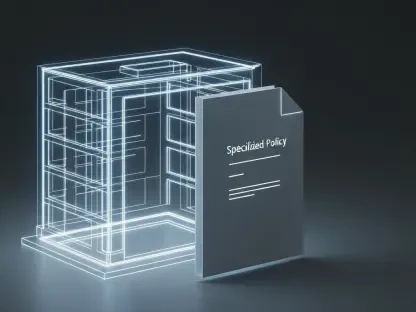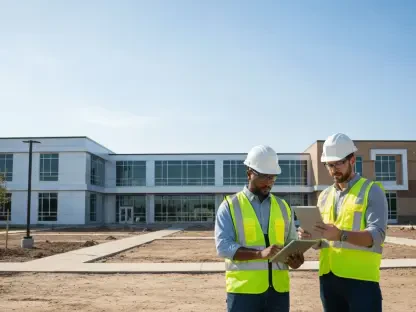In an era where high-speed internet is no longer a luxury but a necessity, the challenge of bringing fiber connectivity to multi-dwelling unit (MDU) properties, especially older brownfield communities, has stumped many providers across the United States. Ubiquity Smart Buildings, a specialized division of the full-service fiber provider Ubiquity, is changing the narrative with a groundbreaking approach to fiber-to-the-unit (FTTU) overbuilds. These older properties, often burdened by outdated infrastructure, have historically been sidelined due to the prohibitive costs and logistical complexities of upgrades. Yet, Ubiquity has crafted an innovative economic and operational framework that not only overcomes these barriers but also sets a new standard for connectivity in residential spaces. Their model promises to bridge the digital divide, ensuring that even the most challenging environments can access the benefits of modern internet infrastructure.
Revolutionizing Economic Feasibility
Ubiquity Smart Buildings has tackled the daunting financial hurdles of MDU fiber overbuilds with a meticulously designed approach that prioritizes cost efficiency. By employing advanced engineering techniques and conducting thorough site surveys, the company ensures that per-unit costs remain within a sustainable range, even for complex brownfield projects. Detailed build estimates further refine their budgeting process, eliminating unexpected expenses that often derail similar initiatives. A key component of this strategy involves partnering with regional private contractors who bring local expertise and competitive pricing to the table. This collaboration allows Ubiquity to maintain high standards of quality while keeping expenditures in check, making fiber deployment feasible in properties that other providers have long considered uneconomical. The result is a scalable model that redefines what’s possible in the realm of broadband expansion for older residential communities.
This economic breakthrough extends beyond mere cost-cutting to a deeper understanding of market dynamics in the MDU sector. Ubiquity’s focus on affordability does not compromise the robustness of the infrastructure being deployed. Instead, it ensures that the fiber networks installed are built to last, offering long-term value to all stakeholders involved. By targeting properties previously deemed unviable for upgrades, Ubiquity is addressing a significant gap in the market, where demand for high-speed internet continues to surge due to remote work, online learning, and streaming services. Their ability to balance fiscal responsibility with technological advancement positions them as a leader in transforming connectivity landscapes. This strategic foresight also paves the way for broader industry adoption of similar cost-effective practices, potentially reshaping how fiber overbuilds are approached nationwide.
Forging Strategic Alliances
A pivotal element of Ubiquity Smart Buildings’ success lies in its national program of partnerships with tier-1 and tier-2 service providers, such as Quantum Fiber under Lumen Technologies. These collaborations create a symbiotic relationship where service providers gain access to untapped customer bases in MDU communities that were once out of reach due to financial constraints. Ubiquity takes on the critical tasks of designing and constructing the fiber infrastructure, allowing their partners to concentrate on marketing and service delivery. This division of responsibilities streamlines operations and maximizes efficiency, ensuring that high-speed internet reaches residents swiftly. With projects already underway in numerous states, the scalability of this model hints at a future where fiber access could become ubiquitous across diverse regions.
These partnerships also leverage existing fiber backhaul networks, reducing the need for redundant investments and accelerating deployment timelines. For service providers, this means an opportunity to expand their footprint without the burden of upfront capital costs for infrastructure development. Meanwhile, Ubiquity benefits from the established presence and resources of these providers, creating a mutually advantageous framework that drives growth. The emphasis on clear role delineation ensures that each party can focus on its strengths, fostering trust and long-term cooperation. As this collaborative approach continues to gain traction, it serves as a blueprint for how strategic alliances can address systemic challenges in the broadband industry. The potential for further expansion into additional markets underscores the transformative impact of such teamwork on connectivity access.
Enhancing Value for All Stakeholders
Ubiquity’s innovative model delivers substantial benefits to both property owners and residents of MDUs, creating a compelling case for fiber overbuilds. For property owners, the financial appeal is undeniable—Ubiquity covers all costs associated with designing and constructing the fiber network, eliminating any capital expenditure on their part. Beyond this, owners receive a revenue share from partnering service providers, which directly boosts property value and enhances tenant satisfaction through state-of-the-art amenities. This arrangement not only modernizes the infrastructure but also positions the property as a competitive option in the rental market, where high-speed internet is increasingly a deciding factor for prospective tenants.
Residents, on the other hand, gain access to cutting-edge connectivity through the installation of dual-port fiber jacks in each unit, enabling multi-gigabit internet speeds at affordable rates. The added advantage of retail choice among multiple service providers ensures flexibility and competitive pricing, empowering tenants with options tailored to their needs. This future-proofing of residential spaces guarantees that connectivity remains robust and relevant for years to come, addressing the growing reliance on digital platforms for work, education, and entertainment. By prioritizing the needs of both owners and residents, Ubiquity’s approach fosters a sense of community value, where modern infrastructure translates into tangible improvements in quality of life. The widespread adoption of such benefits could redefine expectations for MDU living standards across the country.
Minimizing Disruption in Deployment
Efficiency and consideration for residents define Ubiquity Smart Buildings’ construction process during fiber overbuilds. Close coordination with property management ensures that access to units is scheduled at convenient times, minimizing inconvenience to tenants. This thoughtful planning reduces the impact of installation activities on daily routines, making the transition to fiber connectivity as seamless as possible. Additionally, Ubiquity pre-installs customer premises equipment (CPE) for service providers in each unit, eliminating the need for multiple visits and allowing for immediate service activation once the network is live. Such attention to detail reflects a commitment to resident experience that sets a high bar for industry practices.
Remarkably, Ubiquity completes these brownfield overbuilds in half the time typically required by traditional methods, demonstrating an unparalleled dedication to speed without compromising quality. This accelerated timeline is particularly significant in older properties, where prolonged construction can exacerbate logistical challenges and tenant frustration. By streamlining the deployment process, Ubiquity not only enhances operational efficiency but also builds trust with property owners who value minimal disruption. The focus on rapid yet meticulous execution ensures that communities can enjoy the benefits of high-speed internet sooner rather than later. As more providers take note of this approach, it could inspire a shift toward faster, less intrusive methods in the broader telecommunications sector, ultimately benefiting countless residents.
Building Trust Through Collaboration
Ubiquity Smart Buildings’ achievements are underpinned by strong relationships with third-party consulting groups, MDU legal teams, and service provider partners. These connections facilitate a smooth contracting process, with Ubiquity securing access agreements for infrastructure development while service providers manage marketing contracts. Such a collaborative framework ensures that all parties are aligned in their goals, creating a cohesive strategy for bringing fiber to brownfield properties that were previously excluded from upgrades. This emphasis on partnership extends beyond mere logistics, fostering an environment of mutual respect and shared purpose that is essential for tackling complex challenges in the connectivity space.
The role of legal and consulting support cannot be overstated, as it helps navigate the often intricate regulatory and contractual landscapes of MDU projects. By maintaining open communication and clear agreements, Ubiquity ensures that potential roadblocks are addressed proactively, paving the way for successful deployments. This relational strength is a critical factor in transforming properties once considered unfeasible for fiber into connected hubs of modern technology. As the industry evolves, these collaborative efforts highlight the importance of trust and teamwork in overcoming systemic barriers. The lessons learned from such partnerships could inform future initiatives, ensuring that connectivity solutions remain inclusive and accessible to diverse communities.
Paving the Way Forward
Reflecting on Ubiquity Smart Buildings’ journey, their pioneering efforts in MDU fiber overbuilds mark a turning point in broadband accessibility for older communities. Their ability to dismantle economic and logistical barriers through innovative strategies and partnerships sets a precedent for others in the industry. Looking ahead, the focus should shift toward scaling these solutions to reach even more underserved areas, ensuring that no property is left behind in the digital age. Stakeholders are encouraged to explore similar collaborative models, investing in infrastructure that prioritizes long-term value over short-term gains. By continuing to refine deployment processes and strengthen alliances, the path to universal high-speed internet access becomes clearer, promising a future where connectivity is a fundamental right for all residents, regardless of property age or location.









